Trung Le Nguyen’s Meaningful Art
In his 2020, The Magic Fish, author and illustrator Trung Le Nguyen shows how elements of art can communicate meaning in a graphic novel. Trung Le Nguyen uses colors to communicate context, importance, and emotion. He also employs simple shapes to serve as symbols which help develop characters throughout the novel. Finally, Trung Le Nguyen includes and omits lines in a way that dictates the focus of his scenes.
Color
Trung Le Nguyen uses the colors blue, yellow, and red to indicate fairy tales, the past, and the present, respectively. The blue fairy tales include three different stories about Alera, Tấm, and Ondine. The yellow past depicts Hiền’s life as a young woman in Vietnam. The red present focuses mainly on Tiến’s life with his mother and father, Hiền and Vĩnh, and his two friends, Claire and Julian. The color coding allows Trung Le Nguyen to shift quickly between a fairy tale, Hiền’s past, and the present without the use of words (p. 28).
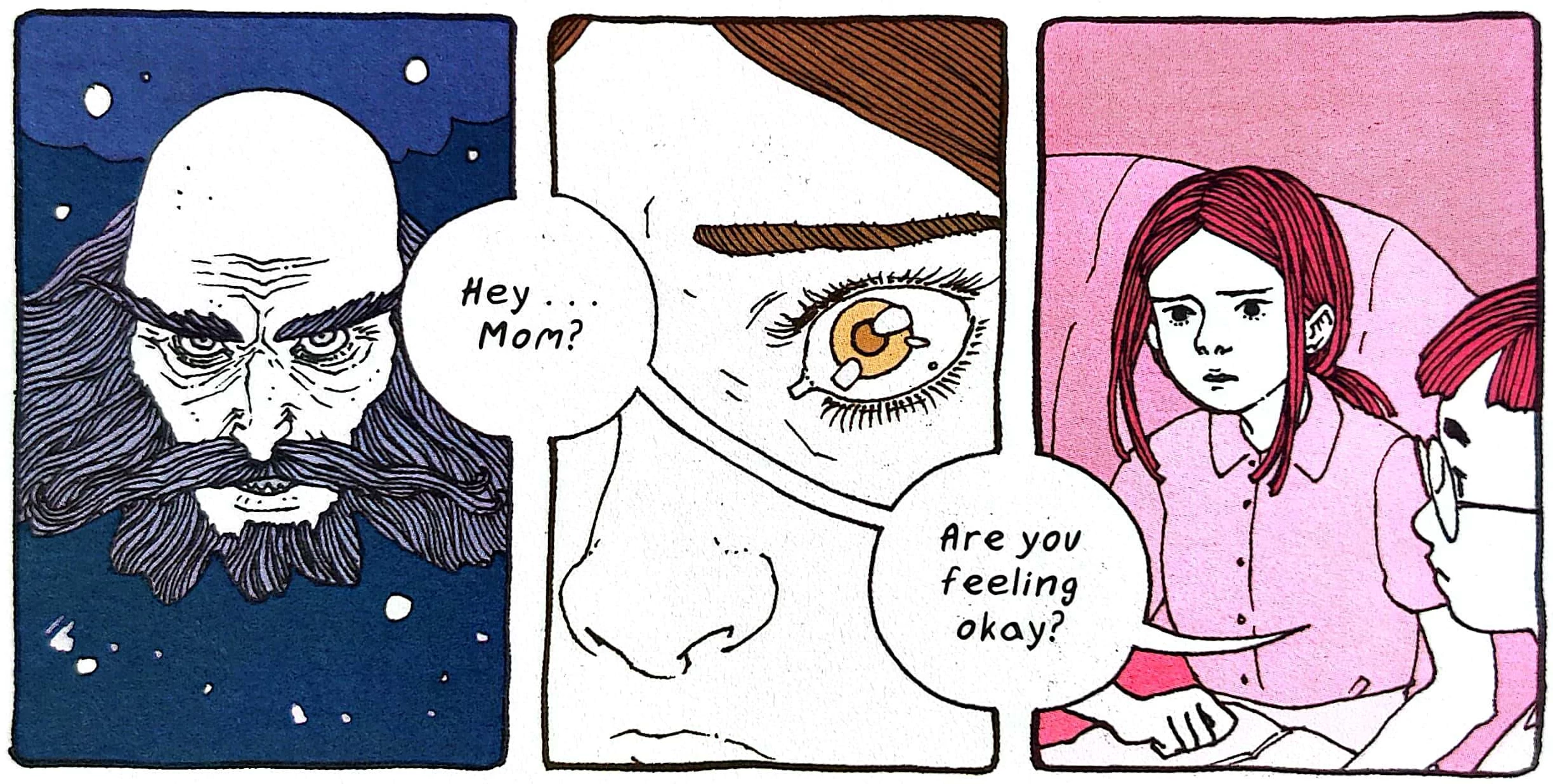
Despite the three different colored contexts, however, the orange color of the peaches remains consistent. The orange color of the peaches, regardless of context, highlights the symbol’s importance. Orange peaches first appear in the red present, on a table in Hiền’s house, and in a frame where Hiền discusses her sons interests (p. 5). In the next context, the orange color first radiates from the peach tree in a blue fairy tale, in a frame that describes a sea princess and the birth of her daughter, Alera (p. 9). The orange peaches appear in a second fairy tale, where they make their initial appearance in a frame that describes a loving mother and her daughter, Tấm (p. 132). The consistent orange color of the fruit suggests that all mothers pass down gifts to their children.

Trung Le Nguyen communicates grievous scenes with the use of white central figures against a color background. When Hiền returns to Vietnam to mourn her mother’s passing, Hiền and her aunt’s white figures contrast against the red background (p. 129). In another scene with Father Niles, Mrs. Flynn, and Tiến, the three white figures appear against a red background because Father Niles claims that when children tell their parents that they are gay, parents feel grief (p. 172).
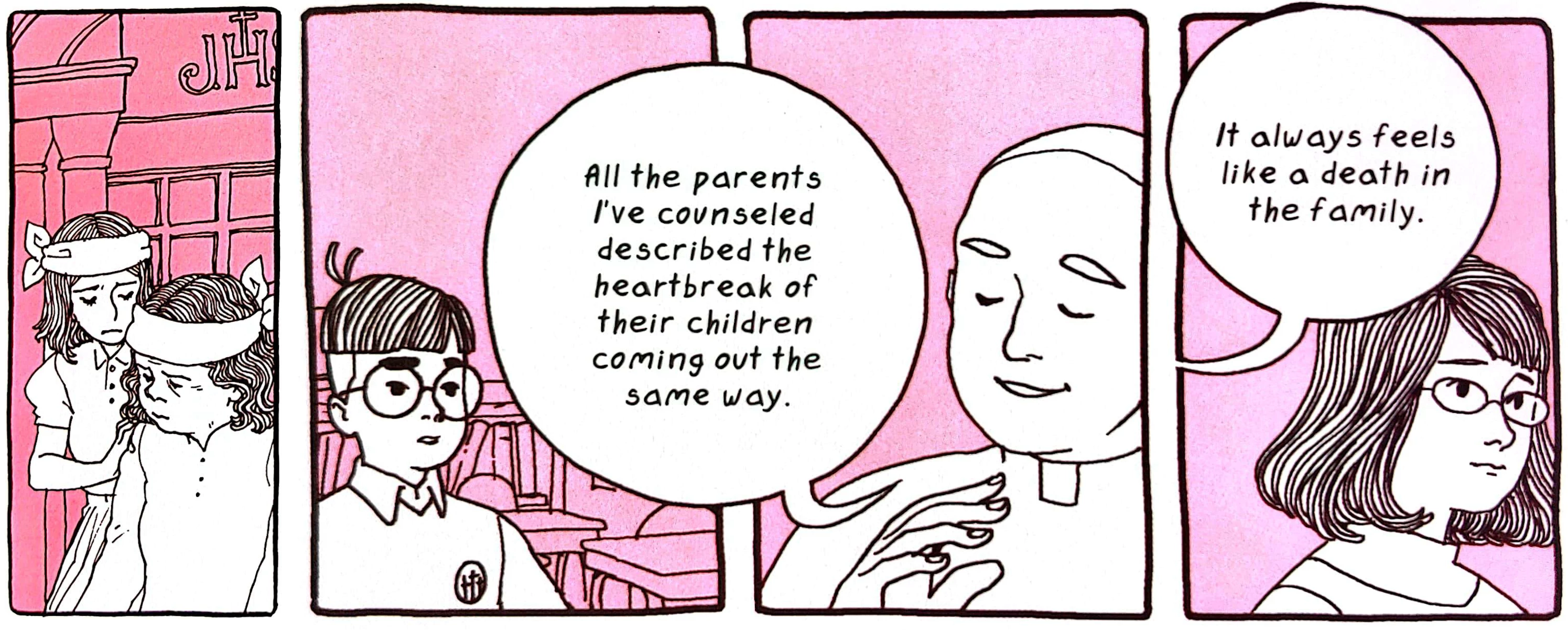
Shapes
Trung Le Nguyen first shows the shape of the Christian cross to reveal Vĩnh’s religion (p. 27). In the present, Trung Le Nguyen includes a cross on the wall of Tiến’s school, and three small crosses on the uniforms of Tiến and his classmates. The cross on the wall and on the students’ clothes communicates that Tiến and his friends attend a Christian school (p. 89). When Hiền travels to Vietnam to mourn her mother, Trung Le Nguyen shows the Christian cross again, atop a church (p. 129). Hiền and her aunt sit near a casket in the church. The cross shows the Christian funeral for Hiền’s mother - an event the Trung Le Nguyen never expresses with words.
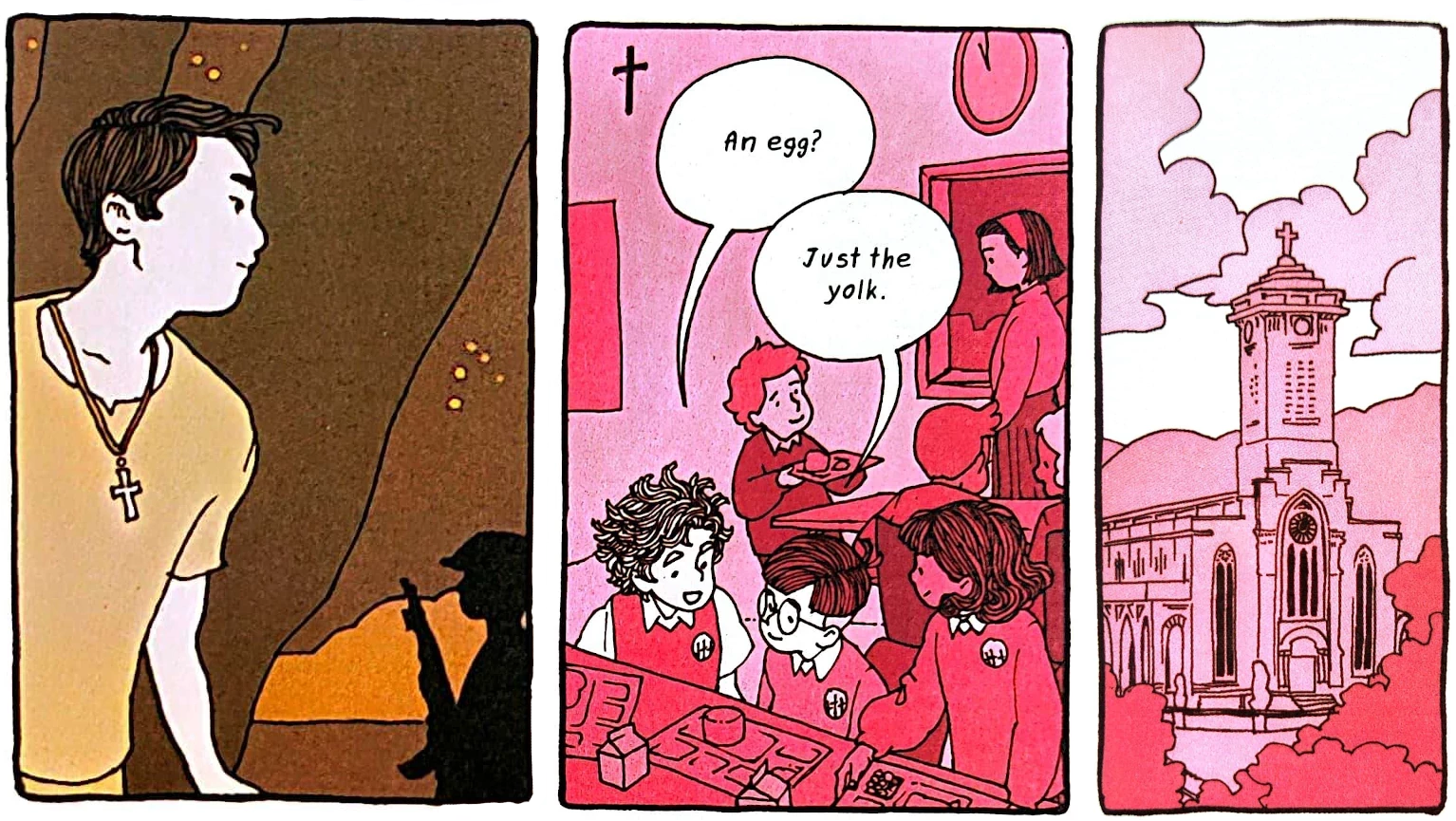
Another shape that Trung Le Nguyen uses throughout The Magic Fish is the star. He draws the star to designate good people, feelings and events. A star appears for the first time in the story on the back of the protagonist Tiến’s jacket (p. 3-4). Stars also appear as emanata when Trung Le Nguyen introduces Tiến’s friend, Julian (p. 43). In one panel with Claire and Tiến at the school dance, stars appear on Claire’s dress and float in the air around her (p. 156). The stars that accompany Tiến, Julian, and Claire throughout the story highlight their goodness and also connect the three friends.
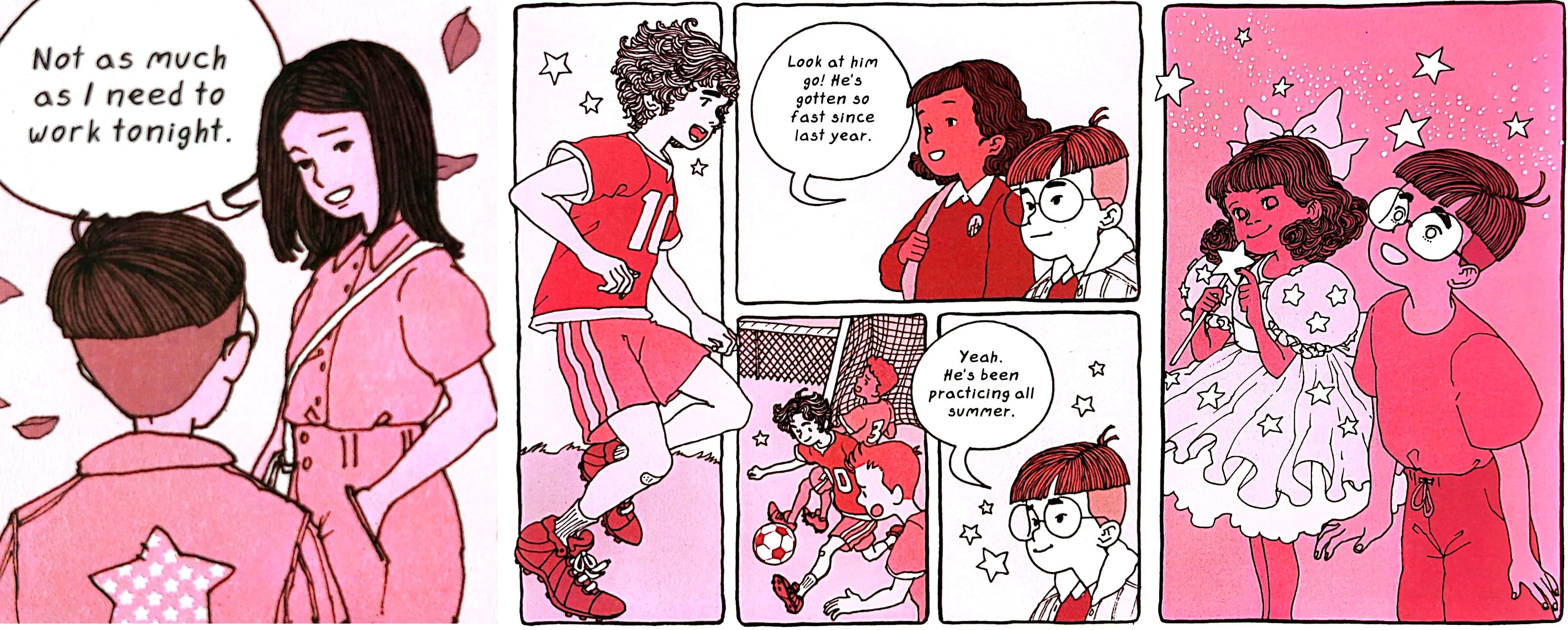
Trung Le Nguyen shows the peach in three different contexts in The Magic Fish. In each context, he first shows the peaches in a frame with a mother and child. In each context, he also shows the peaches inside the home where one of the characters loses one or more family members. The peaches first appear in Hiền’s home (p. 5), who later in the novel loses her mother. Peaches also appear inside Alera’s home (p. 18-19), whose mother disappears into the sea and never returns to Alera. Trung Le Nguyen also depicts peaches in the family home of Tấm, a girl who loses her mother and father. The peaches connect and highlight the struggles of three different families.

Line
Trung Le Nguen draws lines to make strands of hair and highlight specific characters. When Tiến tells Claire about his grandmother’s death, the friends are at school. Trung Le Nguyen illustrates other students in the background, but the focus remains on Tiến and Claire. The lines that add detail to their hair is one way in which Trung Le Nguyen keeps the focus on the friends (p. 125). When Hiền visits her aunt in Vietnam, Hiền’s aunt tells her a fairy tale. Again, the lines of their hair separate them from the other people in the scene and keep the focus on Hein and her aunt (p. 147). At the school dance, Mrs. Flynn watches Tiến and Julian dance from a distance. Although she stands far away, Trung Le Nguyen draws lines in her hair in order to draw attention to her watchful presence (p. 160).

Another way Trung Le Nguyen shifts focus is through the use of silhouette. When Prince Maxwell IV and Alera speak to each other at his birthday party, the guests furthest away reduce to simple silhouettes (p. 57). Trung Le Nguyen similarly depicts a beach scene in Vietnam. In the foreground, a woman and child appear in more detail. Behind them are two more people at the beach, but any details to distinguish them are unnecessary - their contours are enough for the scene (p. 130). As Tiến and Claire enter the school dance, Trung Le Nguyen draws only the contours of the friends in order to shift the focus to the bright lights of the school dance in front of them (p. 156).
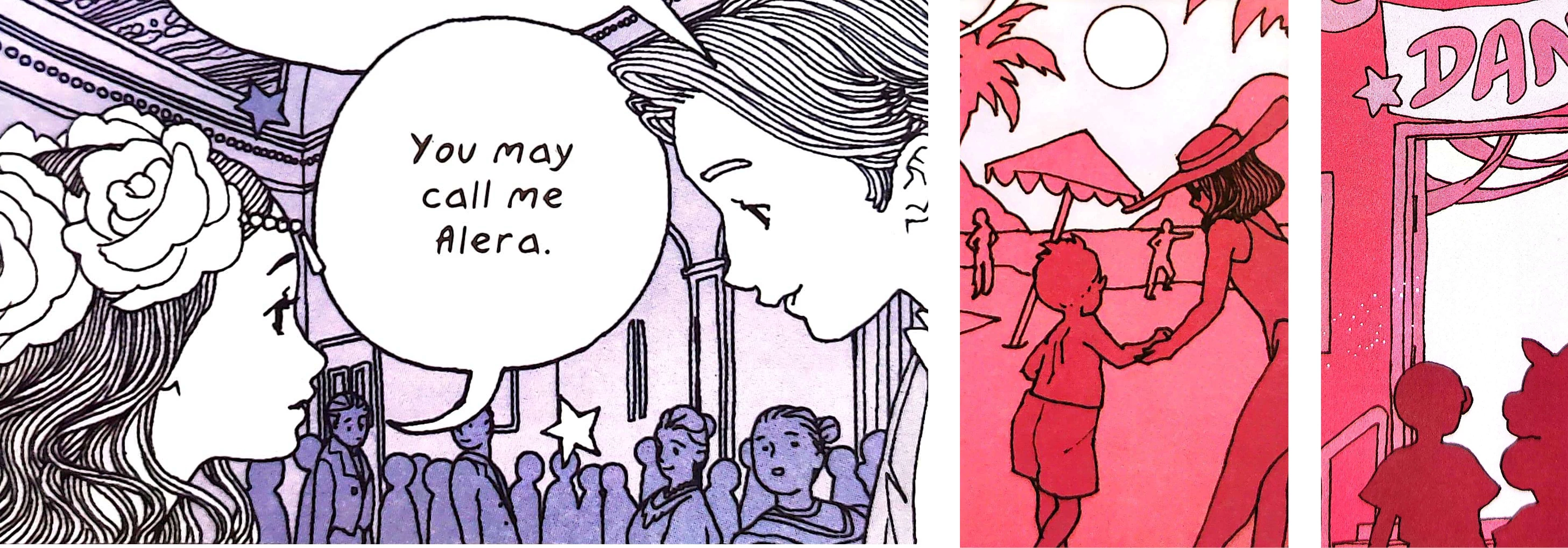
Trung Le Nguyen completely omits the panel lines for scenes that depict some of the most important relationships in The Magic Fish. Tiến’s friend Claire supports Tiến throughout the novel, and as Trung Le Nguyen illustrates, her compassion for Tiến is invaluable (p. 149). When Tiến’s mother returns from her trip to Vietnam, Trung Le Nguyen highlights the embrace between the mother and her child (185). At the end of the novel, Hiền tells her son a story that concludes with a happy start to a romance between two women. The relationship between the two women, Bertie and Ondine, confirms not only Hiền’s unconditional support of her son, but also the power individuals have to change and make new stories for their families. The relationship between Bertie and Ondine serves to represent and validate Tiến. As if to emphasize the boundlessness of their importance, Trung Le Nguyen frees certain relationships of panel lines.
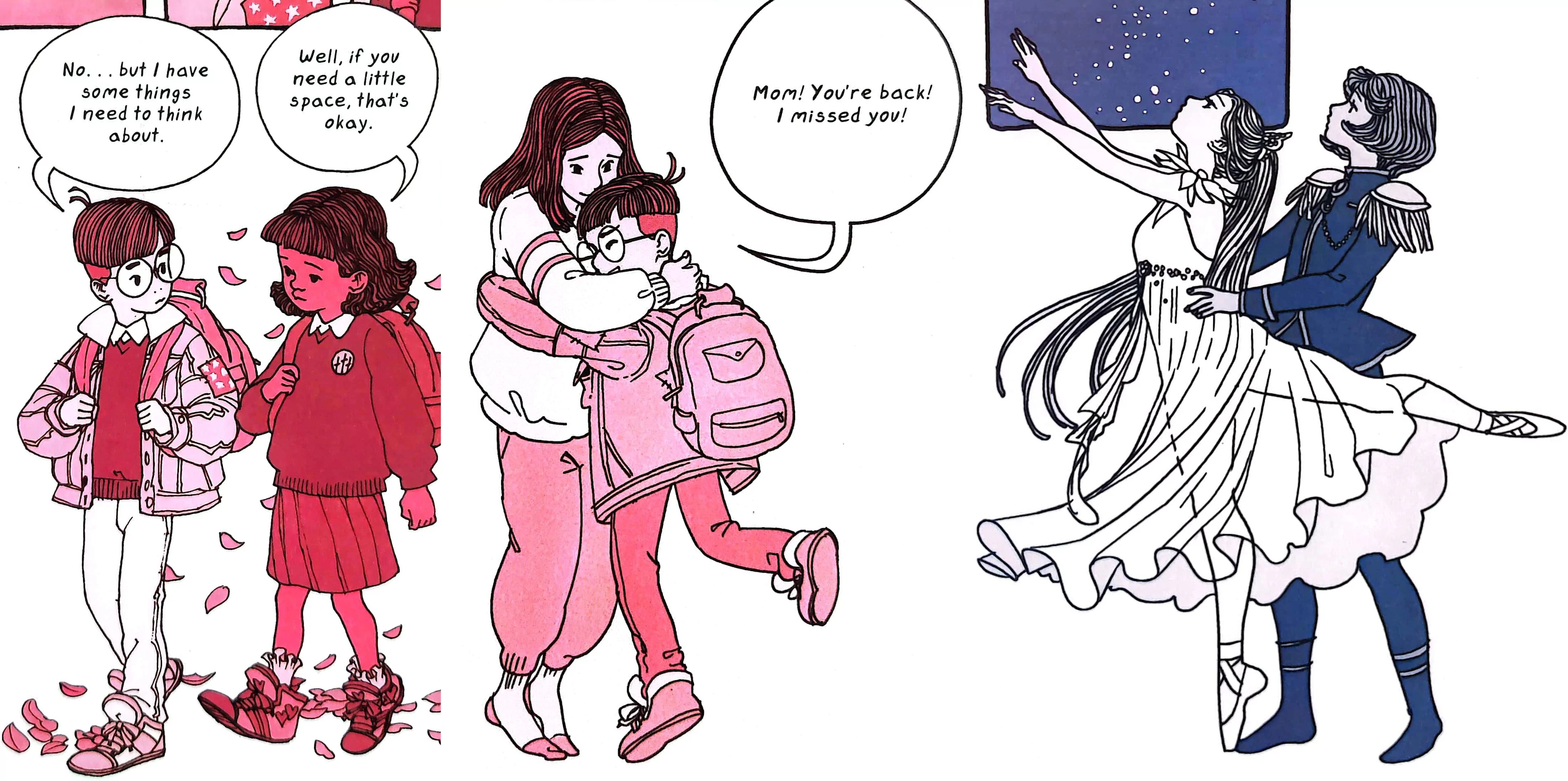
References
Nguyen, T.L. (2020). The magic fish. Random House Graphic.